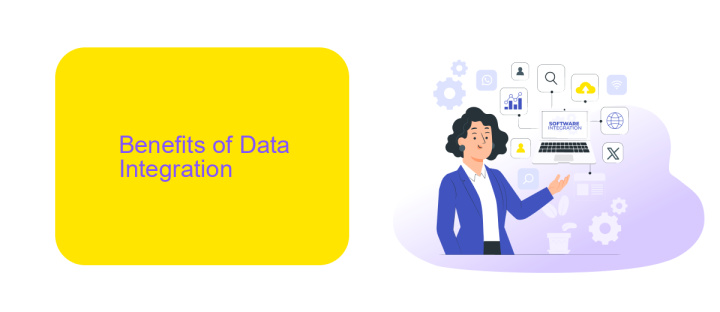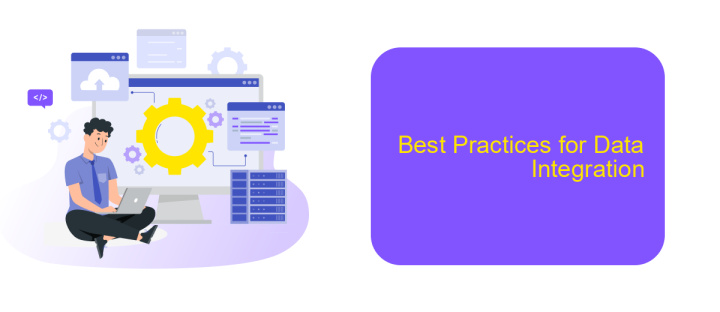Why Data Integration is Important
In today's data-driven world, organizations are inundated with vast amounts of information from various sources. Data integration is crucial as it consolidates this disparate data into a single, coherent view, enabling more informed decision-making, enhancing efficiency, and driving innovation. Without effective data integration, businesses risk missing critical insights and losing their competitive edge.
Importance of Data Integration
Data integration is crucial for businesses as it enables them to combine data from various sources into a cohesive and unified view. This process is essential for making informed decisions, improving operational efficiency, and enhancing customer experiences.
- Streamlined data management
- Enhanced data accuracy and consistency
- Improved decision-making capabilities
- Cost savings through automation
- Better customer insights
Platforms like ApiX-Drive simplify the integration process by providing an easy-to-use interface for connecting various applications and services. This not only reduces the time and effort required to set up integrations but also ensures that data flows seamlessly between systems, enabling businesses to focus on their core activities.
Benefits of Data Integration

Data integration is a crucial process for businesses as it allows them to combine data from various sources into a single, unified view. This facilitates better decision-making by providing a comprehensive picture of the organization's operations. By integrating data, companies can eliminate data silos, reduce redundancy, and ensure that all departments have access to the same up-to-date information, thereby improving overall efficiency and productivity.
Moreover, data integration enhances data quality and consistency, which is vital for accurate reporting and analytics. Services like ApiX-Drive simplify the integration process by offering automated solutions that connect different applications and data sources seamlessly. This not only saves time but also reduces the risk of errors associated with manual data handling. By leveraging such tools, businesses can focus on strategic tasks rather than being bogged down by technical challenges, ultimately driving growth and innovation.
Challenges of Data Integration

Data integration is a complex process that involves combining data from different sources to provide a unified view. This process faces several challenges that can complicate its implementation and effectiveness.
- Data Quality: Inconsistent or inaccurate data can lead to erroneous insights and decisions.
- Data Silos: Different departments often store data in isolated systems, making integration difficult.
- Scalability: As the volume of data grows, maintaining performance and reliability becomes challenging.
- Security: Ensuring data privacy and protection during integration is crucial to prevent breaches.
- Compatibility: Different data formats and structures can hinder seamless integration.
Services like ApiX-Drive can help mitigate these challenges by providing automated solutions for data integration. ApiX-Drive simplifies the process by connecting various data sources and ensuring data consistency and security. By leveraging such tools, organizations can streamline their data integration efforts and focus on deriving valuable insights from their unified data.
Best Practices for Data Integration

Effective data integration is crucial for ensuring seamless data flow across various systems and platforms. It helps in maintaining data consistency, improving decision-making, and enhancing operational efficiency. To achieve successful data integration, organizations should follow certain best practices.
Firstly, it is essential to define clear objectives and requirements for the integration process. Understanding what you aim to achieve will guide the selection of appropriate tools and methods. Additionally, ensure that data quality is maintained throughout the integration process by implementing data cleansing and validation techniques.
- Choose the right integration tools: Utilize platforms like ApiX-Drive, which offer user-friendly interfaces and robust integration capabilities.
- Ensure data security: Implement encryption and access controls to protect sensitive information during transfer.
- Monitor and maintain: Regularly check the integration processes for any issues and update them as needed to accommodate changes in data sources or business requirements.
- Documentation: Keep detailed records of integration processes, mappings, and configurations to facilitate troubleshooting and future updates.
By adhering to these best practices, organizations can streamline their data integration efforts, ensuring that data flows smoothly and securely across systems. Leveraging tools like ApiX-Drive can further simplify the process, allowing businesses to focus on deriving value from their integrated data.


Future of Data Integration
The future of data integration is poised to be transformative, driven by advancements in AI and machine learning. These technologies will enable more intelligent and automated data integration processes, reducing the need for manual intervention and minimizing errors. Real-time data synchronization will become the norm, allowing businesses to make faster and more informed decisions. Additionally, the rise of cloud computing will facilitate seamless integration across diverse platforms and systems, breaking down silos and fostering a more connected data ecosystem.
Moreover, as businesses increasingly adopt a multi-cloud strategy, tools like ApiX-Drive will play a crucial role in simplifying data integration. ApiX-Drive offers a user-friendly interface and robust automation features that streamline the integration process, making it accessible even for non-technical users. This democratization of data integration will empower organizations of all sizes to harness the full potential of their data, driving innovation and competitive advantage in an ever-evolving digital landscape.
FAQ
Why is data integration important?
What are the main benefits of data integration?
How does data integration improve decision-making?
What challenges can arise from poor data integration?
How can businesses implement effective data integration solutions?
Routine tasks take a lot of time from employees? Do they burn out, do not have enough working day for the main duties and important things? Do you understand that the only way out of this situation in modern realities is automation? Try Apix-Drive for free and make sure that the online connector in 5 minutes of setting up integration will remove a significant part of the routine from your life and free up time for you and your employees.

